
-
Featured products
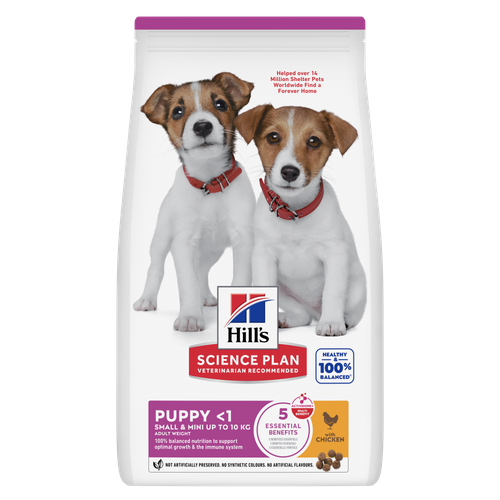 Small & Mini Puppy Dog Food
Small & Mini Puppy Dog FoodHill's Science Plan Puppy Small & Mini Breed Dog Food with Chicken is a complete pet food, specially formulated with ActivBiome+ Multi-Benefit Technology.
100% balanced nutrition to support optimal growth & the immune system.Shop Now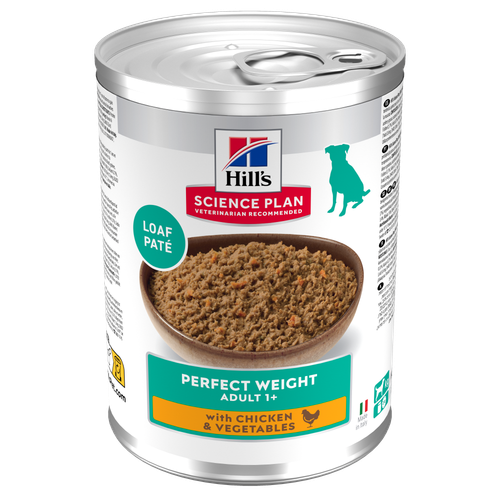 Perfect Weight Adult Dog Food with Chicken & Vegetables
Perfect Weight Adult Dog Food with Chicken & VegetablesHill's Science Plan Perfect Weight Adult Dog Food with Chicken & Vegetables ia a complete premium dog food for dogs prone to weight gain or who are slightly overweight. This savoury tinned loaf is enriched with ingredients that support healthy weight maintenance & long-lasting weight support.
Shop Now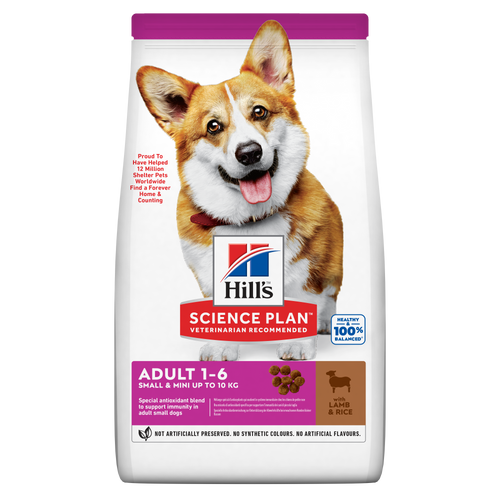 Small & Mini Adult Dog Food
Small & Mini Adult Dog FoodHill's Science Plan Small & Mini Breed Adult Dog Food with Lamb & Rice is a complete pet food, specially formulated with ActivBiome+ Multi-Benefit Technology.
Tailored nutrition for the unique needs of small dogs during the prime of their life.Shop NowFeatured products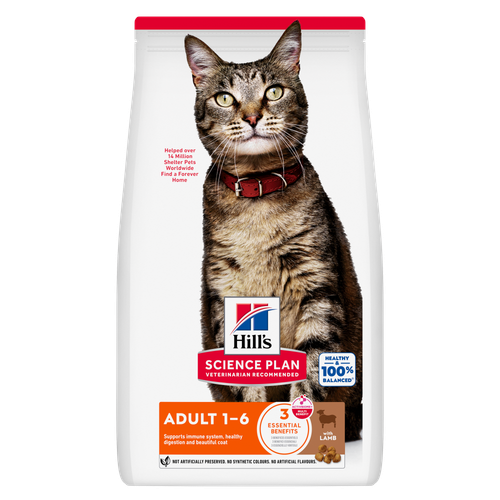 Adult Cat Food
Adult Cat FoodHill's Science Plan Adult Cat Food with Lamb & Rice is a complete pet food, specially formulated with ActivBiome+ Multi-Benefit Technology.
This food is specially formulated to fuel the energy needs of cats during the prime of their life.Shop Now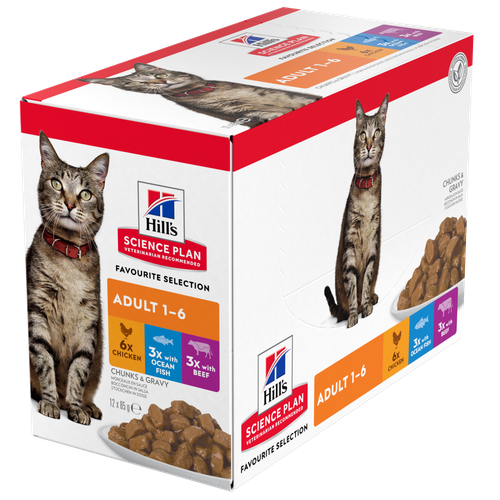 Feline Adult Wet Food
Feline Adult Wet FoodTender chunks in gravy for cats, with high-quality protein to maintain lean muscle. With vitamin E and omega-3s & -6s for healthy skin and balanced minerals to support healthy vital organs.
Shop Now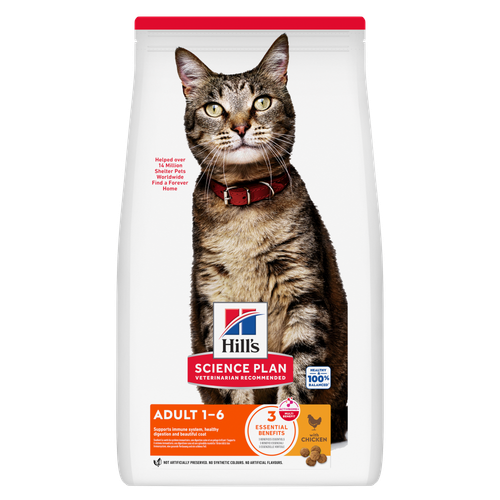 Adult Cat Food
Adult Cat FoodHill's Science Plan Adult Cat Food with Chicken is a complete pet food, specially formulated with ActivBiome+ Multi-Benefit Technology.
This food is specially formulated to fuel the energy needs of cats during the prime of their life.Shop Now -
Dog
- Dog Tips & Articles
-
Health Category
- Weight
- Food & Environmental Sensitivities
- Urinary
- Digestive
- Joint
- Kidney
-
Life Stage
- Puppy Nutrition
- Adult Nutrition
- Senior Nutrition
Cat- Cat Tips & Articles
-
Health Category
- Weight
- Skin & Food Sensitivities
- Urinary
- Digestive
- Kidney
-
Life Stage
- Kitten Nutrition
- Adult Nutrition
Featured articles The Right Diet For Your Pet
The Right Diet For Your PetIn people, the right diet is very important. If you are eating the wrong way for your metabolism, activity level, age and lifestyle you could end up with health issues.
Read More Proteins
ProteinsTo make a protein, amino acids are linked together in a long chain. The chain is then bundled into to a three-dimensional structure, like a tangled ball of yarn.
Read More Show some love with wet foods: a great choice for pets with health issues
Show some love with wet foods: a great choice for pets with health issuesShow some love with wet foods: a great choice for pets with health issues.
Read More -


How and when to feed your cat.
It's important to feed your cat the right amount of food at proper intervals, but this can be tricky -- feeding requirements vary greatly from one cat to another. Feeding guides on the food can or bag are just a starting point. It's critical to your kitten's health that her physical condition is monitored regularly and the feeding amount adjusted as needed.
To help keep your cat healthy, Hill's recommends following the simple steps in this cycle:
- Weigh your cat
- Feed based on feeding guide and veterinary recommendations
- Evaluate your cat's physical condition
- Adjust the amount you feed accordingly as your cat grows
Switching food
- If switching your cat to Hill's Science Plan product, gradually introduce it over a 7-day period. Do this by mixing your cat's former food with increasing proportions of the new food, until only Hill’s Science Plan is being fed. Your cat will then be able to fully enjoy the taste and benefits of the superior nutrition provided by Hill’s Science Plan.
You and your vet
Your vet is the best source of information about the health and well-being of your cat. Ask your vet’s advice regularly on your cat's weight because achieving and maintaining a pet's ideal weight not only reduces certain health risks, but can lead to your cat having a more energetic, longer and healthier life.
Ask your veterinarian which of these three feeding methods is best for your cat:


Tasty Tips
Free Choice: Food is available to your cat at all times.
Time-Limited Feeding: Food is available to your cat for a limited time.
Meal Feeding: A measured amount of food is available to your cat at specific meal times each day.
Water: Your cat must have an adequate supply of fresh water at all times. Not having water to drink for a sustained period of time will harm your cat's health.
Treats & titbits: Although it is tempting to give table scraps they do not provide your cat with the correct balance of nutrients. Try to be sparing with treats, as giving too many can lead to weight gain or nutritional imbalance.
The next step: When your cat reaches maturity at a year old, their nutritional needs will be different. You cat needs to move onto an adult food that will provide specific vitamins and minerals in a balance that's correct for their age. Hill's Science Plan can provide exactly that. The lifestage range is tailored to keep your cat in the best health throughout life, for all breeds and life-stages.


One of our staff authors prepared this article for you
Related products

Tender chunks in gravy for cats, with high-quality protein to maintain lean muscle. With vitamin E and omega-3s & -6s for healthy skin and balanced minerals to support healthy vital organs.
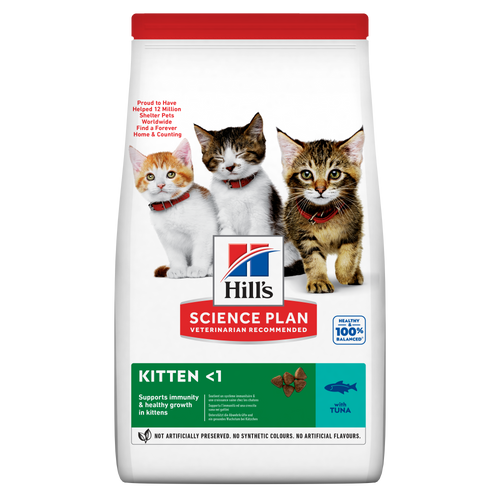
Hill's Science Plan Sterilised Kitten Cat Food with Salmon is specially formulated with ActivBiome+ Multi-Benefit Technology. This food is carefully formulated for the developmental needs of kittens, so they get the best start in life & grow to their full potential.

Hill's Science Plan Adult Cat Food with Chicken is a complete pet food, specially formulated with ActivBiome+ Multi-Benefit Technology.
This food is specially formulated to fuel the energy needs of cats during the prime of their life.

Hill's Science Plan Adult Cat Food with Lamb & Rice is a complete pet food, specially formulated with ActivBiome+ Multi-Benefit Technology.
This food is specially formulated to fuel the energy needs of cats during the prime of their life.
Related articles

From essential vitamins & minerals to different types of meat, learn what to look for when choosing the best cat food for your feline.

Cats are very clean creatures and your kitten will spend approximately five hours a day grooming herself. In doing so, they'll pick up any loose hairs from their coat.

Many human foods are dangerous to cats. Read about 5 of the worst toxic food offenders that can kill your cat - and how much it takes to hurt them.

Discover practical tips for feeding a fussy eating cat to ensure they get the nutrition they need. For more feeding advice for picky cats, visit Hill's Pet UK.

Put your cat on a diet without them knowing
Our low calorie formula helps you control your cat's weight. It's packed with high-quality protein for building lean muscles, and made with purposeful ingredients for a flavorful, nutritious meal. Clinically proven antioxidants, Vitamin C+E, help promote a healthy immune system.
Put your cat on a diet without them knowing
Our low calorie formula helps you control your cat's weight. It's packed with high-quality protein for building lean muscles, and made with purposeful ingredients for a flavorful, nutritious meal. Clinically proven antioxidants, Vitamin C+E, help promote a healthy immune system.

